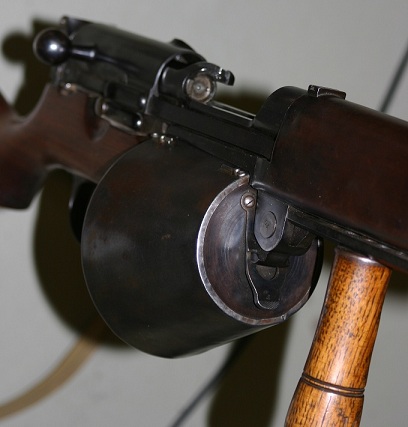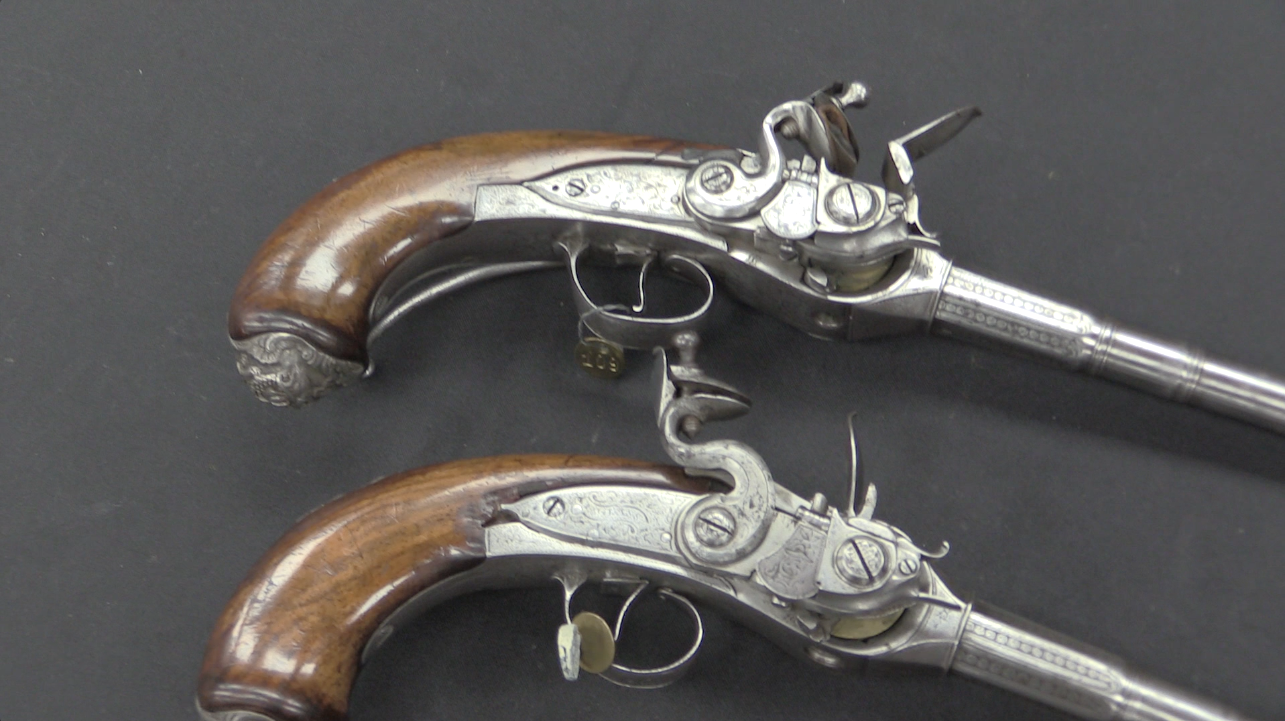The Farquhar-Hill rifle was developed by Colonel Moubray Farquhar and gunsmith Arthur Hill in England, and initially patented in 1908. The original design was a recoil-operated system, but this proved unreliable and was replaced in 1915 with a gas piston mechanism instead.

The Farquhar-Hill used the same multi-spring operating system as the later Beardmore-Farquhar machine gun, which in theory allowed it to tolerate a wide range of powder charges in ammuntion. We haven’t seen firsthand evidence of that, but we have fired the Farquhar-Hill and found it to have surprisingly light and gentle recoil, and consistent ejection, dropping all its spent cases into a small area (one sign of a well-designed firearm). The first gun was built for 8mm, but the production versions (or as close as they came to major production) were in .303 British, with a 19-round drum magazine.

The mechanism worked by having the gas piston on step removed from the bolt. Upon firing, the piston would compress two springs, a mainspring and a piston spring. The mainspring was held captive by a rear latch, which did not release until the piston was at its full rearward travel. At that point, the front of the mainspring was locked in place by a second latch and the rear was released to cycle the bolt backwards and eject the empty cartridge. This released the front mainspring latch, allowing it to return to its extended position, ready for another firing cycle. The bolt was pushed forward by a separate spring, as was the gas piston. Using three springs in the gun instead of just one added to its complexity, but did make it a pleasant shooting rifle and very likely did allow it to function well with overly hot loads (as the force of the gas piston was buffered by the delayed action of the mainspring).
The Farquhar-Hill appears to have been adopted and ordered by the British Army in 1918, but the end of hostilities in Europe led to the order being cancelled before and rifles were delivered. It did see some use with British aviators, along the same lines as the Mauser Selbstlader and Mondragon rifles. For observers and gunners aloft, self-loading rifles were an enormous advantage over manually operated weapons, and these early rifles were briefly used before the practice of mounting machine guns in aircraft took hold.
We have a series of photos of a Farquhar-Hill rifle that we have added to the Farquhar-Hill page in the Vault, where you can also download high-resolution copies of all of them.



I would love to see some footage of this truly forgotten weapon being fired and handled, if possible!
We’re working on getting it on video…
Thanks! I look forward to see that video!